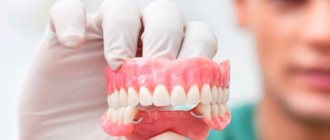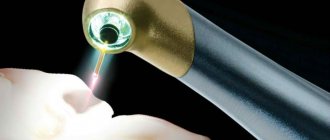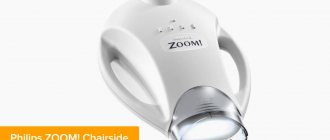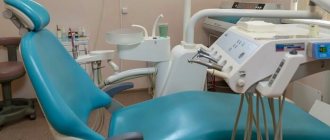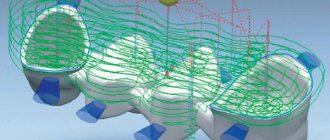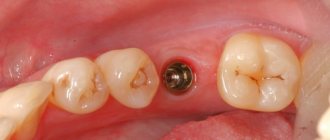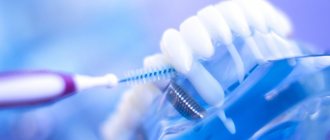Medicine is an area in which modern technologies have literally revolutionized in recent years. Dentistry, being one of the most knowledge-intensive areas of medicine, can serve as ideal proof of this. The changes that became possible thanks to the latest technologies have affected almost all its areas - diagnostics, treatment, prosthetics, prevention. New drugs and materials, research methods and computer modeling have become firmly established in dental practice. The most notable breakthroughs in this area include:
- the use of computer technologies in the process of diagnosis, treatment and dental prosthetics, digital radiology;
- use of laser in the treatment of oral diseases;
- the use of ozone to treat affected areas of the tooth;
- sanding with air;
- the use of new methods of pain relief in treatment and prosthetics;
- use of the latest materials for the manufacture of fillings, dentures and dental crowns.
It is worth talking about each of them in more detail.
Application of computer technology
Periodontitis diagnostic system “FLORIDA PROBE” (USA)
Today, diagnosis, treatment, and dental prosthetics are unthinkable without the use of one form or another of computer technology. Special computer programs are capable of simulating the patient’s oral cavity, which allows the doctor to more effectively make a diagnosis, select the type of therapy and prosthetics, and prescribe recommendations for the patient. And the patient gets the opportunity to visually familiarize himself with the condition of his teeth and better understand what their treatment and prosthetics will consist of.
Intraoral video camera
One of the most recent achievements is the so-called neuromuscular dentistry, which studies the neurophysiology of the oral cavity and the characteristics of the patient’s jaw movement and the activity of the masticatory muscles. It is quite obvious that obtaining and processing this kind of data is impossible without sophisticated computer technology. Also, in the country's leading clinics, programs are used that study the patient's facial expressions. Together, this allows the dentist to use a full animated model of the oral cavity, displayed on a computer display, where he can rotate the three-dimensional image in any direction and view it from different angles.
The intraoral camera is another new product that significantly facilitates the doctor’s work. The device is a microscopic video camera that is placed in the patient’s mouth and transmits an enlarged image to a computer screen. As a result, both the doctor and the patient have the opportunity to examine the condition of the teeth and gums in great detail. Sometimes, with the help of such a camera, a doctor can see details that even an x-ray cannot show him.
New generation clasp structures
The clasp design is based on a fairly rigid metal arch, and the fastening elements are clasps, attachments or telescopic crowns. Such orthopedic systems are prescribed only in cases of partial absence of teeth, since supporting elements are necessary for their fixation. They are more compact and convenient, durable and reliable. If we are talking about the upper jaw, then there is another undeniable advantage - the absence of a massive palatal bridge, which often causes a gag reflex in patients and distorts the taste of their favorite dishes. Separately, it is necessary to highlight the splinting clasp structure with “claw-shaped” processes, which are designed to fix each loose tooth.
The most popular and affordable option for clasp prosthetics is to fasten the structure using clasps - metal hooks that cover the supporting elements and thus ensure reliable retention of the system in the mouth. There are also models with micro-locks (attachments) - the system literally snaps into place. But to install the device on telescopic crowns, you will have to grind down the living supports, but you don’t have to worry about the aesthetic side of the issue.
Read more about clasp solutions in our special article.
Laser Application
Nowadays, a very wide range of problems are solved with the help of lasers. Here are just some of the areas of its application:
- diagnosis and therapy for caries;
- treatment of periodontitis and pulpitis;
- removal of tumors of various nature;
- elimination of increased sensitivity of teeth;
- treatment of bleeding gums;
- acting as a scalpel during surgical procedures;
- complete disinfection of the oral cavity.
Laser therapy has a number of advantages over traditional methods of treatment:
- The laser provides 100% disinfection for all types of operations.
- There is no risk of bleeding when using it.
- All procedures are absolutely painless.
- Minimal traumatic effect on tissues, which contributes to their good regeneration.
This method has virtually no disadvantages. The only one of them can be considered its high cost today.
Microprosthetics
Microprosthetics is a technique for restoring a dental unit when it is partially destroyed, provided that the root and nervous systems are preserved. Most often, teeth chip when chewing hard food or mechanical injuries. This violates the integrity of the dentition and increases the load on neighboring units. In addition, a chipped incisor or fang is a visible cosmetic defect.
To correct it, an orthopedic dentist may suggest:
- Dental onlays or veneers. They are made from high-strength ceramic compounds that are visually indistinguishable from natural enamel. They are installed using hypoallergenic dental cement, which firmly fixes the onlay to the front surface of the tooth. The thickness of the veneer is up to 1 mm; before fixation, the orthopedic dentist removes part of the hard tissue. The microprosthesis is durable and beautiful, completely restores the functions of the tooth, and does not require special care. This design is used not only for the restoration of chips, but also in the case of darkening of the enamel, the appearance of cracks or areas of discoloration on it.
- Dental inlays. They are made from the same material as fillings, but are made according to an exact impression of the tooth, returning it to its original shape. The products are used primarily for the restoration of chewing teeth. Installation requires minimal preliminary preparation of the oral cavity, for example, no grinding of hard tissue is required. The procedure is painless, does not cause discomfort to the person and is performed in one visit to an orthopedic dentist.
Regardless of the technology chosen, microprosthetics remains one of the most gentle methods of restoring dentition. During the manipulations, the orthopedic dentist does not damage the surrounding tissues, since no grinding of adjacent units occurs. Other advantages of microprostheses include:
- Minimal adaptation period - after recovery there is no sensation of a foreign object in the mouth, diction is not impaired, and there is no need to change eating habits.
- Short production time - unlike other types of dentures, veneers and inlays can be produced within 1-2 days after contacting the dental clinic.
- Long service life - the linings last for decades without requiring restoration or replacement. They also do not need special care - normal oral hygiene is sufficient.
- Maximum aesthetics - products are cast from materials that are externally identical to natural enamel. They do not have a metal frame or fastenings that would be noticeable after installation.
The disadvantages of microprosthetics include the fact that this technique is suitable for correcting only minor defects. If a tooth is completely lost or its nerve tissue is damaged, orthopedic dentistry offers other methods of restoration.
Use of ozone
Ozone is used mainly for caries. This is also a painless modern method that allows you to completely eliminate the use of a drill. The essence of the procedure is to completely disinfect the affected area of the tooth. After treating the tooth with ozone and destroying all pathogenic microorganisms, its surface is coated with an enamel-restoring composition. The entire disinfection procedure takes no more than half a minute. The advantages of this method:
- there is no need to use a drill to penetrate the affected area of the tooth;
- high speed of operation;
- complete disinfection;
- painless operation, which makes the use of ozone especially popular in pediatric dentistry.
The disadvantage is that its use is not always possible. There are deep dental lesions when it is impossible to get to the desired area without a drill.
Basal implantation
Basal dental implantation is considered a relatively new technology; it is not mastered in all Russian dental clinics. This method is used both for complete loss of teeth and for the absence of one or more teeth. Basal implantation allows you to install a dental crown on an artificial root without waiting for it to grow tightly into the bone tissue. This method has become truly revolutionary, since the implantation of conventional titanium implants can last more than one month, and all this time the patient experiences discomfort in the oral cavity.
Initially, basal implantation involved the use of lateral implants with a disc base. Unfortunately, they did not perform as expected. Bone tissue often rejected such an implant. In addition, soft tissue injury sometimes occurred during the installation process. Nowadays, such implants are not used at all in dentistry. Instead, dental surgeons use screw implants with deep threads and a large thread pitch at the bottom of the implant. This ensures the initial tight fit of the structure in place. Artificial dental crowns are very conveniently attached to screw implants. Basal implantation is indicated:
- with partial or complete loss of teeth;
- with partial atrophy of the jaw bone;
- if the patient does not want to increase jaw bone tissue;
- If necessary, urgently install an artificial tooth.
Basal implantation is not used in the following cases:
- the patient suffers from diabetes;
- the patient is HIV-infected;
- the patient is sick with tuberculosis;
- the patient has extremely low immunity;
- the patient suffers from nervous or heart diseases;
- the patient has cancer
- The patient has a tone of the masticatory muscles.
Basal implantation is characterized by extremely rare injury to the soft tissues of the oral cavity. At the same time, implantation of the implant into the jaw bone proceeds very quickly. Suffice it to say that within 3-7 days after implantation the chewing function returns to normal. Practice shows that only in ten cases out of a hundred patients require bone tissue augmentation before basal implantation. The cost of basal implantation is half that of classical implantation in two stages.
In our country, dentists prefer to use Swiss Oneway Biomed implants for basal implantation. They are produced by reputable companies Ihde Dental AG and ROOTT. Much less commonly used in Russia are German shortened Triton Titanium implants, as well as Israeli extended zygomatic implants Noris Medical.
Air sanding
In modern dentistry, there are different ways to replace the drill when treating affected areas of the teeth before installing a filling. One of them is the use of air to grind the tooth surface (microabrasive processing). With air, microscopic abrasive particles are supplied to it, which grind the tooth, removing the affected parts of the tissue. The method is characterized by high precision directed air flow, which helps protect nearby tissues from damage. This method is recommended for use in the early stages of caries.
Stock
-43%
Dental implantation RUR 20,000.
35000 rub. 20,000 rub.
get -25 %
Removable denture for 1 jaw 40,000 rub.
30,000 rub.
get -9 %
BASAL COMPLEX - Restoration of teeth on 1 jaw in 3 days 330,000 rub.
300,000 rub.
get -10 %
Premium implantation Nobel and zirconium dioxide crown 150,000 rub.
135,000 rub. get
Modern methods of pain relief
Electronic automated anesthesia system “SLEEPER ONE” (France)
One of the greatest achievements in the field of dentistry has been the invention of new methods of pain relief. Anyone who has had problems with teeth knows that the main issue for the patient has always been the possibility of effective pain relief. For many, fear of painful procedures has become the main reason for refusing dental treatment, leading to disastrous results. Today, not only new treatment methods that do not require anesthesia at all, but also modern methods of pain relief help to overcome this problem.
Among the medications, it is worth noting the newest drugs that have replaced the usual novocaine and lidocaine. Their effect is many times stronger and does not give side effects. In addition to medications, other new means are now being used. One of them is sedation. This is a type of anesthesia in which the patient is not completely immersed in sleep with a complete loss of consciousness. The state of sedation can be called superficial sleep, when the patient is conscious, but with an altered pain threshold and reduced anxiety. The drugs necessary to achieve this state are introduced into the body in the form of a breathing mixture (breathing mask), or in the form of an intravenous infusion. The method has much fewer contraindications and side effects than general anesthesia.
Veneering and lumineering
Sounds unusual, doesn't it? Another common service in dentistry is teeth lamination. In fact, all these bright and, of course, modern advertising phrases mean thin dentures, more precisely, microprostheses: veneers, lumineers, compositers, nanoeers. All of them transform the teeth located in the smile zone if they have some small defects that the patient wants to get rid of in a comprehensive manner: chips, cracks, an unsightly shade.
Installing veneers will help change the color, shape and size of teeth
These types of dentures have been transforming the smiles of Europeans and residents of the United States for more than 20 years. It was thanks to them that the phrase “Hollywood smile” appeared, that is, like a celebrity’s – ideal, snow-white, without a flaw. However, in Russia, different types of thin linings have become widespread relatively recently - over the last 5-10 years. And today, many modern patients, both young and mature, are rushing to take advantage of the opportunity to install veneers or lumineers.
Latest materials
ICON technology
Most of all, the latest materials are in demand, of course, in prosthetics. However, today they play a huge role in dental treatment (in particular, in fillings). Innovative composite materials are used when placing fillings. The use of many of them allows you to simultaneously replace drilling a tooth with a drill and fill voids in damaged tooth tissue. Often, the use of such techniques allows you to perform all the necessary manipulations for the treatment of caries in one visit.
A popular method of such treatment is Icon or liquid filling. Its essence lies in the fact that the light-composite material is applied to a specially prepared diseased tooth and penetrates into its structure. The procedure is repeated 2 times. Hardening of the substance that has impregnated the tooth tissue occurs under the influence of light. This way the affected area is sealed. At the end of the procedure, the tooth is polished, and the filling site becomes indistinguishable on its surface.
A similar technology is used when installing a photo seal. A composite material is also used here, which, under the influence of ultraviolet light, hardens inside the tooth and can take the desired shape. The method is also widely used to restore lost areas of teeth and chips on fillings, as it is durable and allows you to build up any desired volumes layer by layer.
Content:
- Modern dental treatment - advances that have played a decisive role in the development of the industry 1.1. Use of computer technology 1.2. Laser in dentistry 1.3. Ozone in the field of dentistry 1.4. Air grinding of dental crowns 1.5. Innovative anesthetics that guarantee the absence of pain 1.6. Modern materials for filling, prosthetics and implantation
Dentistry is a field of medicine that is developing at an incredibly fast pace.
Modern methods of dental treatment surprise and delight. Today, dentists offer their patients techniques that allow them to eliminate existing functional and aesthetic deficiencies in the oral cavity without pain or harm to health. Doctors manage to “rehabilitate” seriously damaged units and return them to beautiful visuals. Even the most complex malocclusions, which negatively affect the appearance of the face, aesthetics and the process of chewing food, are eliminated by doctors at private dental clinics quite quickly.
The need for anesthesia before dental treatment
There are a huge number of nerve endings in dental tissues, so pain in this area is one of the most severe. Therefore, anesthesia is required to perform invasive procedures. Indications for its implementation:
- treatment of caries in late stages, affecting the middle and deep layers of dentin;
- removal of the nerve, which is often performed in the treatment of pulpitis;
- all types of surgical manipulations and procedures, including excision of cysts and extraction.
Stages of dental treatment
To start therapy, you must first make an appointment with a dentist and arrive at the clinic on the appointed day. Main stages of treatment:
- Inspection and diagnostics. The doctor visually examines the oral cavity, identifies problems and draws up a treatment plan.
- Professional hygiene. This is a deep cleaning and polishing of teeth in the dentist's office.
- Agreeing on the start date of therapy. If you can start treatment right away, it will be done. Otherwise, the dentist will negotiate with the patient a date that suits him.
- Visiting related specialists. If necessary, the patient consults a periodontist or surgeon.
After completion of all procedures, complete sanitation of the oral cavity is stated, after which the treatment process is considered complete.
Specifics of treatment of anterior teeth
The frontal units belong to the aesthetic zone of the row, and the main feature of the dentist’s work with them is connected with this. A special set of filling materials is used to restore incisors and canines. Some of them imitate dentin and enamel, others are light-curing paints that make it possible to reproduce the individual characteristics of a tooth.
The choice of material for filling the anterior units also has its own characteristics. In particular, it should exhibit minimal shrinkage so that over time a dark stripe does not appear at the border of the filling with the dental tissues. In addition, the material must be amenable to grinding and polishing, which are used to restore the enamel shine. The knowledge of a specialist in the field of face and smile analysis is also important, which helps to obtain the highest aesthetic result.

